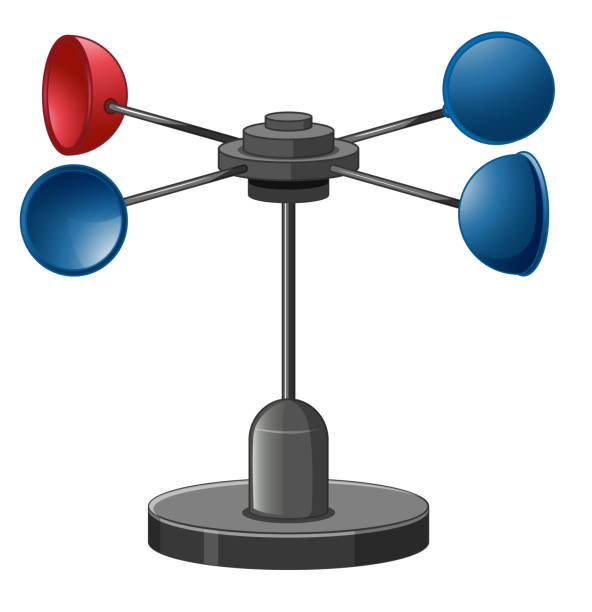Picking the Right Anemometer: A Comprehensive Buying Guide
Picking the Right Anemometer: A Comprehensive Buying Guide
Blog Article
Discovering the Features and Advantages of Anemometers for Climate Lovers and Professionals
From cup anemometers to sonic anemometers, each type brings its distinct set of applications and advantages, losing light on various aspects of climatic problems. As we dig into the features and benefits of anemometers, a deeper understanding arises not only of dominating climate phenomena but also of the wider effects for fields like wind power manufacturing and ecological research study.
Significance of Anemometers in Weather Monitoring
Anemometers play an essential duty in weather condition tracking by offering accurate measurements of wind rate, aiding in forecasting and understanding weather patterns. These instruments, varying from standard cup anemometers to contemporary ultrasonic anemometers, are crucial for meteorologists, researchers, and climate fanatics alike. By measuring wind speed, anemometers aid in determining the intensity of weather condition sensations such as twisters, tornados, and cyclones. Additionally, they offer important information for air travel, maritime operations, and various sectors that are delicate to wind conditions.

Sorts Of Anemometers and Their Applications
With the essential role anemometers play in weather condition monitoring and forecasting, understanding the numerous sorts of these instruments and their applications comes to be important for specialists and lovers in the field. One of the most usual kinds of anemometers include cup anemometers, vane anemometers, hot-wire anemometers, and ultrasonic anemometers. Mug anemometers include 3 or 4 cups mounted on straight arms that revolve with the wind, gauging its rate. Vane anemometers, on the various other hand, utilize a freely rotating vane to line up with the wind direction, offering both wind speed and instructions dimensions. Hot-wire anemometers operate based on the principle of convective warmth transfer, where the cooling result of the air flow is determined to determine wind speed. Ultrasonic anemometers use ultrasonic acoustic wave to compute wind rate and instructions properly.
Mug anemometers are robust and appropriate for basic weather surveillance, while vane anemometers are favored for directional dimensions. Ultrasonic anemometers are non-intrusive and offer high accuracy, often made use of in research and specialized weather condition tracking applications.
Advantages of Using Anemometers in Forecasting
In meteorology, the use of anemometers provides invaluable benefits for improving the precision of weather projecting. Anemometers measure wind rate and direction, supplying vital information for anticipating climate patterns. By incorporating wind data right into forecasting designs, meteorologists can better comprehend the motion of weather condition systems, prepare for changes in atmospheric problems, and issue great post to read more specific projections.
Furthermore, anemometers play an important duty in examining prospective weather condition threats. Checking wind speeds helps forecasters predict extreme climate events such as hurricanes, hurricanes, and winter months tornados with better precision. This early warning system allows authorities to release timely notifies and apply needed safety and security steps, reducing the risks to life and property.
In addition, anemometers aid in optimizing renewable resource production. By analyzing wind patterns, meteorologists can determine ideal places for wind farms and anticipate energy outcome, adding to the reliable generation of wind power.

Anemometers in Wind Energy Manufacturing
Given the essential duty anemometers play in providing precise wind data for weather forecasting and hazard evaluation, their importance includes the realm of wind energy manufacturing. Anemometers are important tools in the area of wind power, where the measurement of wind speed and direction is crucial for identifying the usefulness and efficiency of wind turbine setups. By accurately determining wind rates at varying heights, anemometers help enhance the positioning and design of wind turbines to optimize power output.
In wind farms, anemometers are purposefully placed to collect real-time wind data that is used to examine the prospective energy production of a site. This data is important in figuring out the economic stability of wind power projects and in forecasting power generation to ensure grid stability. Furthermore, anemometers help in keeping an eye on wind conditions to maximize turbine performance, stop damage from high winds, and ensure the safety and security of personnel operating in the vicinity of wind turbines.
Enhancing Climate Recognizing With Anemometers

Anemometers play an essential duty in enhancing our understanding of microclimates. These local weather condition conditions can vary significantly from more comprehensive local forecasts, making it necessary to have exact information for details locations. anemometer. By strategically positioning anemometers in various places, scientists can collect in-depth details on how wind acts in different surfaces, city atmospheres, or bodies of water
Additionally, anemometers add to improving weather projecting designs by giving real-time data on wind actions. This info is especially valuable for anticipating severe weather events, maximizing farming techniques, and sustaining markets like aeronautics and maritime navigating. Generally, anemometers are very useful tools that allow us to dive deeper into the intricacies of weather condition systems, eventually leading to even more accurate forecasts and better-informed choices.
Verdict
In conclusion, anemometers play an important function in weather condition surveillance and page projecting by determining wind rate and direction. They are vital tools made use of by weather lovers and specialists to collect exact data for anticipating weather patterns and evaluating possible effects. Anemometers also have applications in wind power production, further highlighting their value in both meteorology and renewable energy industries. Overall, anemometers contribute to improving our understanding of weather phenomena and improving forecasting abilities. anemometer.
From mug anemometers to sonic anemometers, each type brings its one-of-a-kind set of applications and benefits, losing light on numerous aspects of atmospheric conditions. These instruments, ranging from standard mug anemometers to modern ultrasonic anemometers, are essential for meteorologists, scientists, and weather condition fanatics alike. The most usual types of anemometers consist of mug anemometers, vane anemometers, hot-wire anemometers, and ultrasonic anemometers. Cup anemometers are appropriate and durable for basic climate surveillance, while vane anemometers are preferred for directional dimensions. Anemometers are vital instruments in the field of wind power, where the measurement of wind rate and instructions is critical for identifying the expediency and performance of wind generator installations.
Report this page